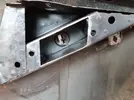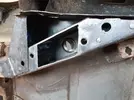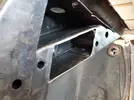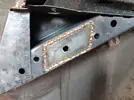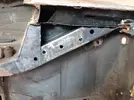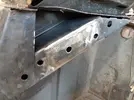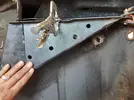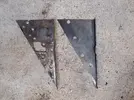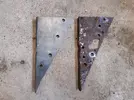There is more to life with TurboRenault.co.uk
You are using an out of date browser. It may not display this or other websites correctly.
You should upgrade or use an alternative browser.
You should upgrade or use an alternative browser.
5 GT Turbo 11 years later silver bullet comes home
- Thread starter Duncan Grier
- Start date
- Featured
-
- Tags
- renault 5 gt turbo silver
Duncan Grier
Well-Known Member
Thanks guys
Duncan Grier
Well-Known Member
Cheers @DaveL485 yep bit of thicker material is almost funLooks great mate, got that welder dialled in, bit easier on the thicker material isnt it.
Finding running a bit hotter seems to suit me in general now but even on the thicker stuff blink and you have a hole lol, nice and easy to pull the torch back and let the wire fill the weld pool to fill back in though. Where any doubt go back in and zap it
On the rtech mig180 for ref on the slightly thicker stuff running voltage 3-3.5 and wire speed 4-4.5 and find myself coming to the lower of the 2 when its got warm and bored of blasting it with air gun
Duncan Grier
Well-Known Member
General life, work and kids all getting ill as circulating the house has slowed down progress but even with the super heat had a few trips into garage
Oh and stole a day to collect my old race car....so of course started working on the also lol
Pics tell the story, the gift that keeps giving but one bit at a time and keep moving. Even drained the pit
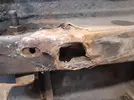
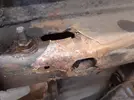
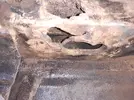

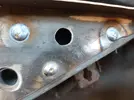
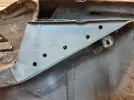
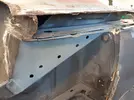

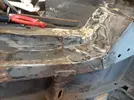
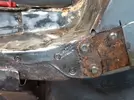

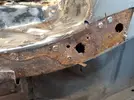
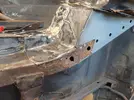
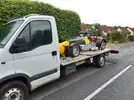

Oh and stole a day to collect my old race car....so of course started working on the also lol
Pics tell the story, the gift that keeps giving but one bit at a time and keep moving. Even drained the pit















Duncan Grier
Well-Known Member
While the inspection camera indicated only surface rust inside, will cut out the new crust found and decide if full corner is coming out also but you kind of know the answer 
Duncan Grier
Well-Known Member
Ok so with the recent heatwave it seemed only right to get some hours on the 5 and hrs and hrs it was  damn it was silly hot
damn it was silly hot 


But while im no professional happy enough it is solid and was worth the pain.....can sleep at night knowing ok
Some fun with new metal liking heat and orrible old French metal hates it, a very quick transition
Ended up kind of building the weld up on the fresh and then pulsing, moving the puddle onto old metal and in places pulsed v short burts if that makes sense???
Just for ref the guide holes for plugs goes upto 7mm and seems a good size
Next job back to rest of inner sill lol.....
Anyway some random pics

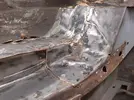

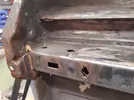
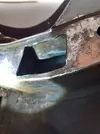
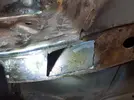

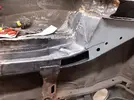

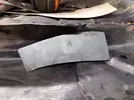


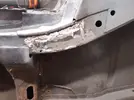
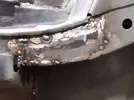
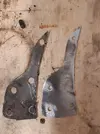

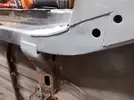
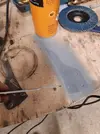
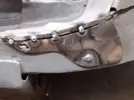

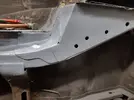
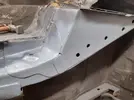
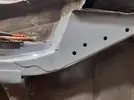
But while im no professional happy enough it is solid and was worth the pain.....can sleep at night knowing ok
Some fun with new metal liking heat and orrible old French metal hates it, a very quick transition
Ended up kind of building the weld up on the fresh and then pulsing, moving the puddle onto old metal and in places pulsed v short burts if that makes sense???
Just for ref the guide holes for plugs goes upto 7mm and seems a good size
Next job back to rest of inner sill lol.....
Anyway some random pics























Duncan Grier
Well-Known Member
Oh and new worse job has to be manually removing original underseat in wheel arches  another thankless dirty time consuming job
another thankless dirty time consuming job
Turbell
Well-Known Member
I wouldn't strip what's sound if it's ok underneath, been there thirty odd years , done its job, my take is moisture gets in by other channels and the rot happens underneath it, when you can't see it happening until it's too late, it rarely rots outside in.
Up to you but if it's a shitter to get off ......therefore it's good, just patch repairs in, blow over good remainder, more important to drown cavities with wax and make sure it bleeds into all seams.
Just my two pennies.
Up to you but if it's a shitter to get off ......therefore it's good, just patch repairs in, blow over good remainder, more important to drown cavities with wax and make sure it bleeds into all seams.
Just my two pennies.
Duncan Grier
Well-Known Member
Thanks @Turbell and advice welcomed as always 
Was a bit of a strange area in levels of rot v thinned out, and my plan is definitely try to leave what is good. Some bits in my pea brain made more sense to take a bit more out to get right....sure I will learn by repaur 297 on it
Was really concerned inside was worse based on some of the bits found but was def better than hoped and satisfied to wire brush what I could, chuck in hydro80 and bit of zinc primer in there. Final step will be drowing it in cavity wax
In another 35 years its someone elses fun project to sort
Was a bit of a strange area in levels of rot v thinned out, and my plan is definitely try to leave what is good. Some bits in my pea brain made more sense to take a bit more out to get right....sure I will learn by repaur 297 on it
Was really concerned inside was worse based on some of the bits found but was def better than hoped and satisfied to wire brush what I could, chuck in hydro80 and bit of zinc primer in there. Final step will be drowing it in cavity wax
In another 35 years its someone elses fun project to sort
Turbell
Well-Known Member
It's always a compromise just how far you take it, paint systems and rust protection moved on in massive steps in the 80's, cars in the 60's and 70's were scabbing up after a couple of years, thin synthetic paint on edges combined with salty roads meant cars were getting blown in virtually from day one, earlier stuff survived better because they were made out of boiler plate!
I can fully understand dipping and such on a 60's E type etc, but on the stuff we're playing around with, if it's an area that has no seams and it's sound, doesn't peel, you're not removing it for weight reduction, then you're better off leaving it be ......you know where I'm coming from, and you're absolutely doing the right thing , in the right places in my opinion.
I don't run a successful restoration business, nor am I time served in any area of panel beating, welding or painting, purely based on my experience ( help from trusted sources ) and seeing other people's work years after it was done, but if it's rusty, crusty or flakey, it comes off, replaced or cleaned bright metal, treated , etched , sealed and cavity waxed......what happens after that is down to how the car is used and stored.
I can fully understand dipping and such on a 60's E type etc, but on the stuff we're playing around with, if it's an area that has no seams and it's sound, doesn't peel, you're not removing it for weight reduction, then you're better off leaving it be ......you know where I'm coming from, and you're absolutely doing the right thing , in the right places in my opinion.
I don't run a successful restoration business, nor am I time served in any area of panel beating, welding or painting, purely based on my experience ( help from trusted sources ) and seeing other people's work years after it was done, but if it's rusty, crusty or flakey, it comes off, replaced or cleaned bright metal, treated , etched , sealed and cavity waxed......what happens after that is down to how the car is used and stored.
DaveL485
Staff member
Are you sure the old steel is clean? Sounds like its not.Ended up kind of building the weld up on the fresh and then pulsing, moving the puddle onto old metal
Duncan Grier
Well-Known Member
Had cleaned steel and maybe to do with inside? It did get a dose of wire brush where I could and plentry of hydro80
Maybe it was just me lol
Maybe it was just me lol
Duncan Grier
Well-Known Member
Pushing on with an hr or 2 where I can, not the greatest way to make quick progress but is better than none and proper enjoying it 
Took over an hr odd Sunday to just make inner sill and weld tab on....the shame
Seems.....well everything eats hrs of time which feels like 10 mins
Tonight spent 15 mins playing with spot welder but was not playing booooo
Resorted to drill holes to plug weld and finish inner ready to weld in only gas showing zero cant make it up and so order refill tomorrow and gave garage a clean up

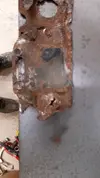

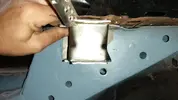
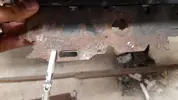

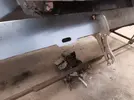
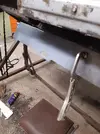


Took over an hr odd Sunday to just make inner sill and weld tab on....the shame
Seems.....well everything eats hrs of time which feels like 10 mins
Tonight spent 15 mins playing with spot welder but was not playing booooo
Resorted to drill holes to plug weld and finish inner ready to weld in only gas showing zero cant make it up and so order refill tomorrow and gave garage a clean up










Turbell
Well-Known Member
Happy as a pig in shit, real satisfaction seeing it come together, take out the bad and put it back properly, chuffed to bits for you.
Construction is really not that intricate on 5's, you can pick them apart, make it all for pennies, pair of outer sills on ......bosh , nice strong shell.
Construction is really not that intricate on 5's, you can pick them apart, make it all for pennies, pair of outer sills on ......bosh , nice strong shell.
DaveL485
Staff member
Absolutely this, it's a time vacuum.Seems.....well everything eats hrs of time which feels like 10 mins
Similar threads
- Featured
- Replies
- 86
- Views
- 2K
- Replies
- 4
- Views
- 363
- Replies
- 2
- Views
- 265
- Replies
- 324
- Views
- 8K

